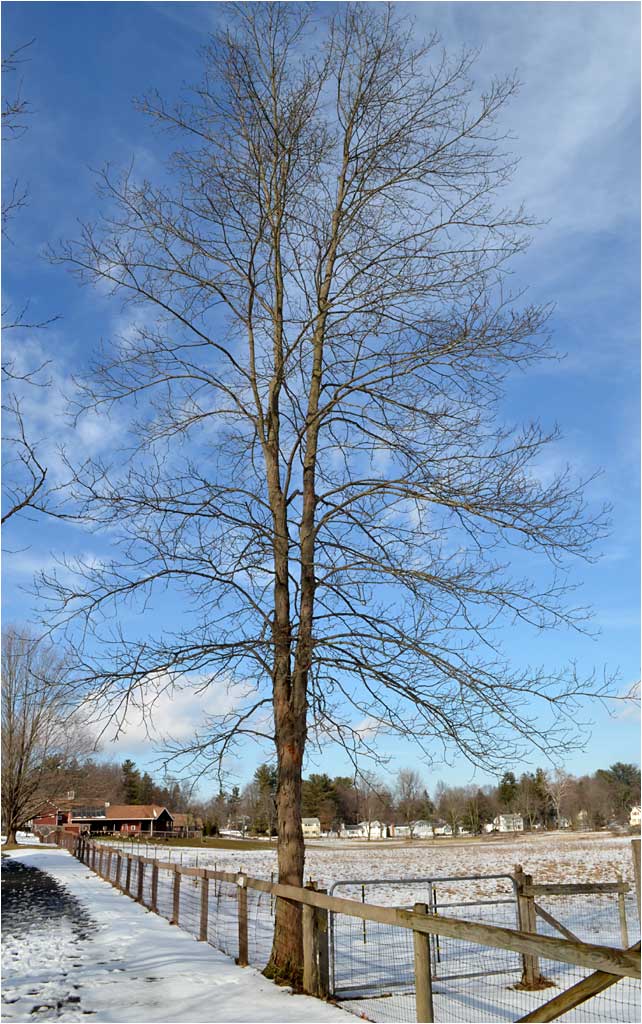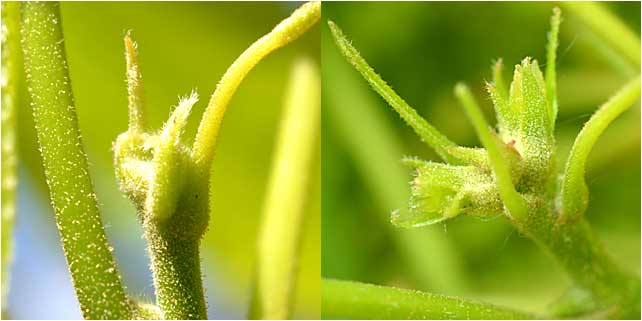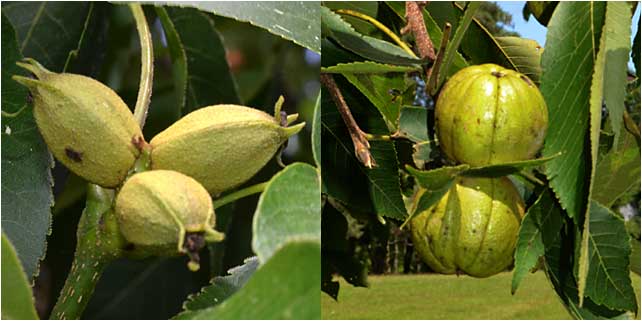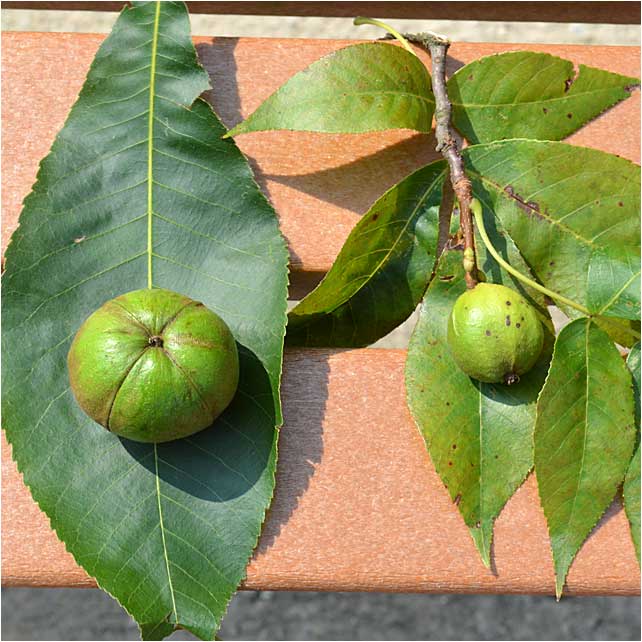35. SHAGBARK HICKORY
Carya ovata

WINTER lets you see the shape (habit) and form of a tree. Hickories are often tall, graceful trees, and this Shagbark Hickory is no exception. Shagbark (and nearly all hickories) are among the slowest growing of all tree species - nearly double the time of a Red Maple, and 1.6x of a White Oak. Although this tree appears young, it has a DBH (Diameter-at-Breast-Height, 4.5 ft.) of 17 inches. It could be a century old. And there are much bigger Shagbarks right here in this corner of the property.
WINTER, BARK (SHAGBARK)

The bark is usually described as "shaggy", and even that may be an under statement. You can often recognize them by the bark alone. It peels from the tree in strips, and curls out from the tree at the bottom of each strip. You will see reddish inner-bark on occasion.
SPRING

After Winter dormancy, the Shagbark Hickory greets Spring with gusto. Hickories are deciduous trees (drop their leaves every year) and also monoceious (male and female flowers on the same tree). Spring is an exceptional time to watch them.
SPRING, HICKORY BLOSSOMS?

Hickory buds swell to a large size in Spring before opening to send out its leaves. When this happens, the trees appear to have "blossoms" on them because the scales resemble flower petals. These are NOT hickory blossoms, just large bud scales. Hickories reproduce much the way OAKS do - male catkins and female flowers.
SPRING, MALE CATKINS

Male catkins (the entire string) are seen emerging (left) and in full bloom (right). The actual flowers are tiny and there are hundreds on each catkin.
SPRING, FEMALE FLOWERS

Unless you are an ardent student of Hickories, or a tree scientist, it is probably likely that you have NOT seen the female flowers of a hickory tree. They are extremely tiny, and superbly camouflaged. They appear for a brief two weeks and if fertilized will soon start making hickory nuts. Familiarize yourself with where to find the nuts, and then look next spring for flowers that are about the size of the very tip of your little finger.
SUMMER

With Spring over, the summer is devoted to growing the large, easily recognized hickory nuts. It will take most of the summer to reach maximum size, but they can be seen even in late spring or early summer. They are a magnet for wildlife and the family of Hickory trees are all considered keystone tree species.
SUMMER, HICKORY NUTS

As you can see, the nut of the Shagbark undergoes quite a transformation from late Spring to late Summer, early Fall. All Hickory nuts are eaten by wildlife, and all are edible for humans as well. In CT, the best tasting nut would be Shagbark.
SHAGBARK vs BITTERNUT HICKORY

At the Westmoor Arboretum, there are several (6 in fact) Shagbark and Bitternut Hickories in the "Hickory Corner". The leaf of Shagbark is much larger than Bitternut, and the nut is as well. Since they grow side-by-side, you will sometimes find nuts from one tree underneath another. That's the squirrels at work.
FALL

If you like to photograph trees and plants, search out the Shagbark Hickory in mid-October thru the first week of November. The brilliant color ranges from an almost pure yellow to rust/yellow, and changes over the course of 4 weeks. Catch the light right (early morning or late afternoon) and you will get some amazing photographs.